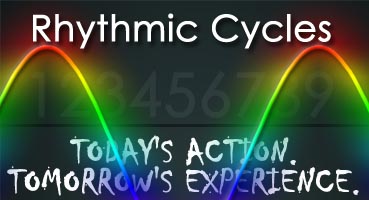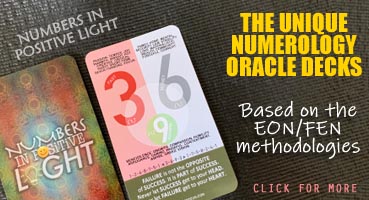Chinese birth dates
I noted there were few searches for words like “Chinese Date,” “Chinese date of birth,” “Lunar,” and “lunar birthday” on my site at different days a few weeks ago. These users (it could be from one or more users) could have tried their luck to understand if it is possible to use Chinese Birth Date as the date format entry to plot an EON chart for further analysis.
 Technically, it is possible to use Chinese or lunar dates as a birthday reference to plot the Elements of Numbers (EON) chart, but it requires prior conversion from a Chinese Calendar system to the Gregorian Calendar system to obtain the actual date. There are many online websites that allow instant conversion of Chinese dates to western solar calendar format. Thus, it’s just an extra step needed before the person could plot an EON chart and then analyse the person’s character and traits.
Technically, it is possible to use Chinese or lunar dates as a birthday reference to plot the Elements of Numbers (EON) chart, but it requires prior conversion from a Chinese Calendar system to the Gregorian Calendar system to obtain the actual date. There are many online websites that allow instant conversion of Chinese dates to western solar calendar format. Thus, it’s just an extra step needed before the person could plot an EON chart and then analyse the person’s character and traits.
In today’s article, I’m sharing some insights into the complexities in using Chinese dates for computations of profiling charts, be they as a Bazi chart, or an EON chart.
- BIRTH TIME NOT AVAILABLE. Whether it’s a Bazi chart or an EON chart, it is still possible to plot the chart without knowing the birth time. For example, I have plotted both Bazi and EON chart for Robert Mugabe, who was recently forced to resign as the president of Zimbabwe according to this TheGuardian article. The Bazi chart screenshot shown below was from my BaziCalc+ (Android) software that I developed many years ago but stopped midway, due to other priorities then.
- CHINESE BIRTH TIME. In Bazi or other Chinese Metaphysics systems that relied on the Chinese Astrology system (12 Chinese Zodiac animals), the hour range is defined in a 2-hour period like 11am-1pm, 1pm-3pm, 3pm-5pm, and so on. In Bazi, there are additional steps required to plot the correct time chart because of the “Early Rat and Late Rat” permutations at 11th hour (11pm) to over midnight until 1am.
- SEASONAL JIE QI ENERGIES. Every month, there is a seasonal Jie Qi time to reflect the change of the monthly energies. To make matters more complex, different Chinese Almanac publishers in Taiwan, China, and Hong Kong, have distinct timings for the Jie Qi transitional period. As a consequence, a person born at a certain birth time might have a varying birth/time chart from professionals who rely on different Chinese Almanac as reference. The deviations are more obvious when your birth day and time fall during the Jie Qi day and around the Jie Qi time period – the Bazi’s Day and Hour pillars (and sometimes the month pillar too) might differ.
- LEAP MONTH. While the Gregorian Calendar system adds 1 leap day (29th) in February every 4 years, the Chinese Calendar system adds a whole month every 3 years. How does this affect the plotting of charts then? I remembered reading an old article some years back written by a popular Feng Shui professional who suggested using the lunar dates direct. While the intention is good, the fundamentals lacked depth. Let me explain further – a person born on 26/9/2014 (in Gregorian date) would have the lunar date as 3rd Day of 9th Lunar Month, Year 2014. That means taking the lunar birthdate as 3/9/2014 (dd/mm/yyyy) directly to plot a numerology or western chart. That sounded great for most people. However, to the discerning users, proposing the direct use of lunar date to compute a western chart is inaccurate and harmful. The reason – another person born one month later on 26/10/2014 (Gregorian date) would, likewise, have the same lunar birthdate as 3/9/2014. This is because September 2014 is the first 9th lunar month while October 2014 is the second 9th lunar leap month.
Luckily for me, it was easy to plot both the Bazi and EON chart should I need to analyse them from both Chinese and Western perspectives because I developed my own software tools – FEON+ and BaziCalc+. Usually, I don’t profile a person by analysing from both Bazi and EON charts. Often times, I observed the tendency signs displayed on both charts could be contradictory, or provide different clues. While some professionals like to brag of their finger-calculation skills to plot basic Bazi chart without referring to any Chinese calendar reference book, it can be time-consuming and might lead to wrong charts at times, when your focus is distracted. What matters to most people, is the profiling analysis and not the chart..
 It is easy to plot an EON chart anytime, anywhere without the need to refer to any calendar reference book. Maybe to some users, they still have to resort to using their finger-calculation skills (or worst, using calculators) to count and sum up the numbers. Anyway, all you require is a pen and a paper to start plotting the birth chart, and you can further extend the analysis by plotting other complimentary charts. And if time and accuracy of charts are of importance to you, then the FEON+ software would be the ideal time-saver productivity tool you’ll need as you can access all relevant charts within seconds.
It is easy to plot an EON chart anytime, anywhere without the need to refer to any calendar reference book. Maybe to some users, they still have to resort to using their finger-calculation skills (or worst, using calculators) to count and sum up the numbers. Anyway, all you require is a pen and a paper to start plotting the birth chart, and you can further extend the analysis by plotting other complimentary charts. And if time and accuracy of charts are of importance to you, then the FEON+ software would be the ideal time-saver productivity tool you’ll need as you can access all relevant charts within seconds.
To avoid confusion, we should not use Chinese dates on western methods. The use of Gregorian calendar dates to record a person’s birth date is the preferred method for EON profiling.
Regards, Ron WZ Sun

















